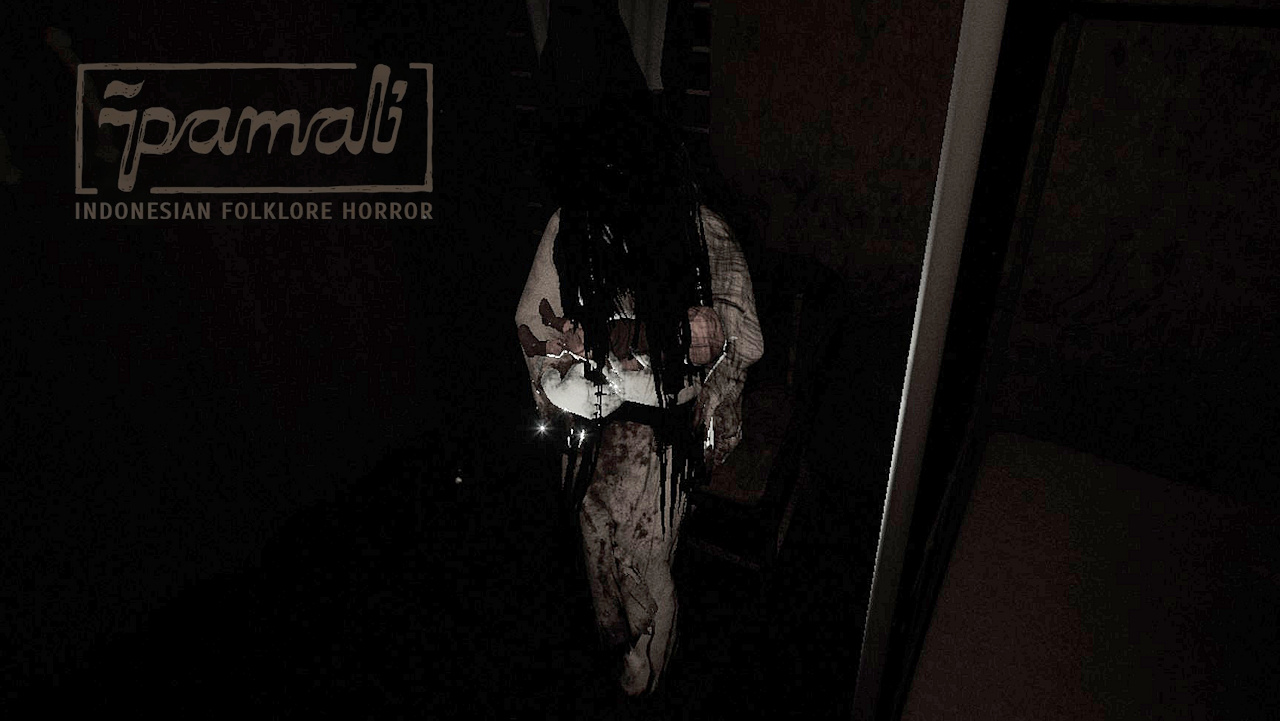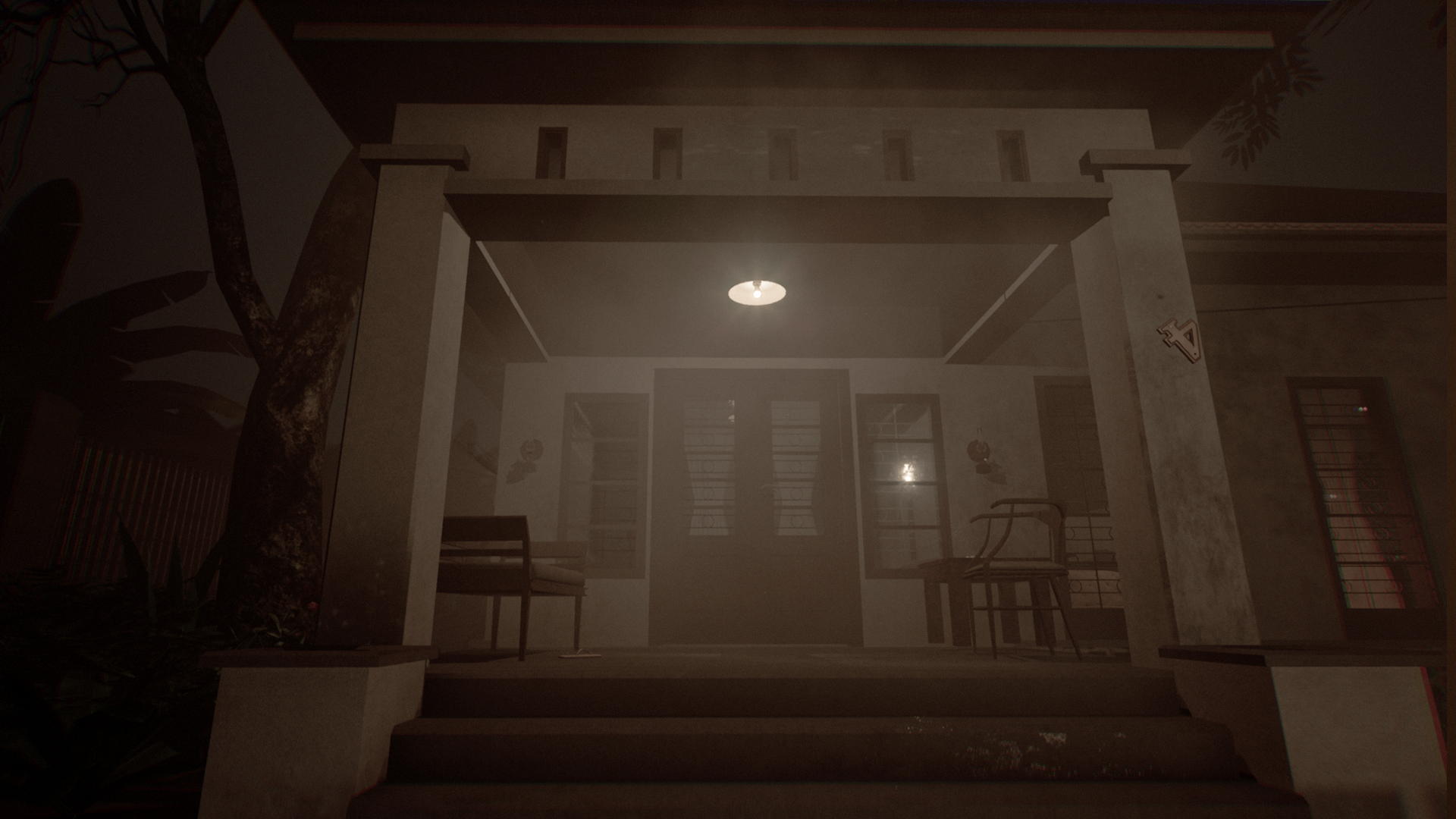Horror games based on folklore are pretty common these days. It makes sense: a lot of folklore is truly terrifying stuff, and it’s fascinating to think that people live and die by the lessons they set forth. That said, most of these games are little more than your average hide-and-seek monster game, featuring a unique enemy with predictable behavior. Pamali: Indonesian Folklore Horror, live on Kickstarter, seeks to break that trend.
In Pamali, the ghosts you encounter don’t seem all that interested in you. They aren’t hiding around corners waiting to pop out at you, or instantly giving chase the moment they spot you. Some entities just want to be left alone, others may get uppity if you move their things or otherwise do things they find offensive.
Not Just a Horror Game
The developers state that their goal with Pamali isn’t just to create a horror game, but to teach you about the folklore of their country and how it relates to certain taboos in their culture. Horror, as they define it, comes from day-to-day life and how you work through it. As such, the way the entities in each of the game’s four stories behave depends on how you, as a player, behaves. The demo is very short, but they do show this off to an extent.
In the demo, the entity of yore is the Kuntilanak, or “White Lady.” In Indonesian folklore, the Kuntilanak (also known as the Pontianak) is the spirit of a pregnant woman who died in some violent manner. She appears as a woman wearing a billowing white dress with long, black hair, and announces her presence through the sound of chirping baby chicks, house geckoes, crying babies, or laughter. Oh, and apparently she can transform into a voracious monster and feast on the organs of men in search of her unborn baby. You know, pretty typical ghost stuff.
You play as Jaka, a man trying to renovate his old family home so that he can sell it. The demo throws us into Night 3, and dialogue hints that up to this point he has already witnessed strange things in the house: objects moving to where they don’t belong, pictures being moved, and the electricity turning on by itself.

Atmosphere over Jumpscares
My experience with Pamali left me hopeful. While there are a few jumpscares, most of the demo builds up an atmosphere that feels downright oppressive the further you go along. As you go through the house, you’re tasked with clearing away any clutter or cobwebs you find. You can also pick items up and examine them. Through Jaka’s comments on these items or through written documents, you can slowly piece together what kind of family Jaka had and even deduce who the ghost might be.
But the thing I wanted to test out most was the behavioral design. So I went through the game twice, trying to alter my gameplay as much as possible.
For my first run, I treated Pamali as I would any other horror game: exploring thoroughly and trying to examine any item not nailed down. I switched on lights as I went through, and politely closed and locked doors behind me when possible. Whenever I encountered a spooky item, I left it be because I’m definitely not touching that shit, would you?
Because I’m a seasoned horror game player, when I heard the calm singing of a ghostly woman caring for an imaginary child in one of the rooms, I promptly moved that room to the bottom of my search list. I also bravely scrambled to switch on any lights that shut off on their own, as any hardened individual would. In one instance, I heard the ghost tilt a painting and immediately realigned it because, uh, rude. When I came back, the lady in the painting was gone. I’m not sure if I offended the ghost or the painting, here.
Rusty Nails
One interesting thing I want to mention quick: in the house, you sometimes find rusted nails. Jaka’s dialogue suggests he keeps finding them out of nowhere. In the lore, the Kuntilanak becomes the horrid demon mentioned above when all of the nails in her head are removed; I wonder if this is a hint that you’re angering the spirit with your behavior? It’s too specific to be random.
In the end, not too much happened. I ended up hiding in the baby room until morning without much incident. What’s interesting is that the game pulled up a sort of grading sheet. For my first go, Pamali congratulated me on being mostly aware of my surroundings and not angering the ghost. It also listed a few things I did that contributed to this result: leaving talismans be, not staring at the creepy red eyes in the distance for too long (it notes that she stares back, creepy), or discovering specific items the ghost feels attachment to. Cool!

For my second run I went the opposite route. I left doors open, I threw away anything the game would let me, and I barely examined clues. When I encountered a spooky item, I picked it up and threw it in the trash where it belonged. For the most part, things didn’t change much, although there was an added air of tension. Lights seemed to turn off more frequently (indeed, there was a moment where I believe I heard a yell and ALL of the lights flicked off), and instead of creepy singing, the ghost seemed to spend more time bawling. Apart from this, the scares were pretty much the same.
Until the end.
The Baby Room
The baby room is the final room in the demo. In the corner, there’s a baby doll resting in a crib. The choice the game presents here is pretty obvious: you can either mock the baby or put it back in the crib. In this go, I mocked it. Jaka, in his native tongue, expressed disdain that his sister would try to “replace” her dead baby with a doll. He punctuated this by calling it “pathetic.” I audibly winced as he did this. Jeez, Jaka, haven’t you ever watched a horror film?
Shortly afterwards, the lights shut off and a voice wailed. Some time passed before the lights flicked back on to reveal—gasp!—that the baby was no longer in its crib. This seemed to be the end, but when I turned to leave, I spotted the doll on a rocking chair. The lights flickered, and the Kuntilanak appeared in its place. You don’t see much of her in the demo; this is the only instance I saw her up close. Even then, it was just a few moments. She wailed in anger, and approached the camera as it faded to black. Whether or not this is a fail state is unclear—this demo isn’t the entirety of Folklore One, after all.
This time, Pamali told me I was hopelessly oblivious. Indeed, the gist of my ending message was that I am a dumbass who deserves to let a ghost eat his organs. It pointed out the things I did wrong and sent me back to the title screen.
Overall, the Pamali demo is promising. I love folklore stuff, and this game appeals to me in a way not much else has. That said, the demo is a very light tease. I don’t feel like it has enough time to show off the behavioral choice system. The overall goal of Pamali’s first scenario is to keep the Kuntilanak happy, which is a unique and cool premise. I just wish we could see more of that idea here.
If nothing else, I urge you to play the demo for yourself and see if you dig it. Kickstarter is all about smaller, more experimental games like this. Pamali has potential, and at the very least it deserves a look. Just don’t stare for too long, or something might stare back…




